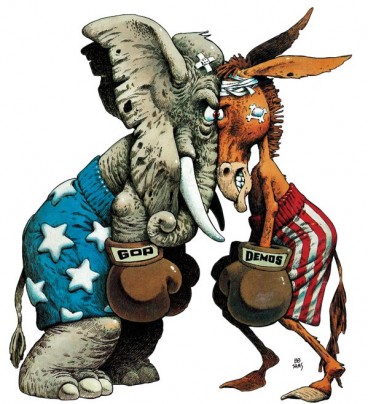
In the past year we’ve watched Washington, D.C., freeze into paralysis. The wheels of government have nearly ground to a halt as Congress barely even agreed to provide the money for spending already required by laws it had earlier passed. And the inhabitants of the two sides of the political aisle bitterly blame each other. Ask Republican Congressman Allen West who’s at fault, and he says the Democrats who have “a vicious propaganda machine. It espouses lies and deceit.” Ask Senate Majority Leader Harry Reid, and it’s entirely the Republicans who stop all progress with “obstructionism on steroids.” Ask the American people, and they agree with both; according to at least one recent poll, they blame the two parties equally. There seems to be something fundamentally wrong with our two-party system.
In fact, passing the buck seems to be the only thing the parties can agree on right now. They each agree that the other party is broken. So it’s hardly surprising that there is serious talk of a third-party presidential candidacy this year. Ron Paul, the libertarian Texan, has suggested he may run on his own if he doesn’t win the Republican nomination, and an outfit called Americans Elect has worked quietly but diligently to make sure the paperwork has been done to assure that some third-party candidate can run in all fifty states. Almost everyone is fed up with Democrats and Republicans.
Are we on the verge of the collapse of the two-party system? You might think so, but it has been amazingly resilient, surviving through catastrophes as great as the Civil War and the Depression. The last time a president was elected who wasn’t a member of today’s Democratic or Republican party was in 1848. “E Pluribus Unum” says the motto on the Great Seal—“Out of many, one.” Maybe that should be “Out of many, two.” A recent Gallup poll found that 31 percent of Americans identify themselves as Democrats and 27 percent as Republicans. Considerably more—40 percent—are independents, disdaining both parties. But that leaves only 2 percent to belong to any other party out there.
How did it get this way? Can it really last much longer? And what, at bottom, do the two parties stand for?
At the very beginning, the founders didn’t want parties, yet we’ve had them almost always since. There seems to be something basic to both human nature and our political system that makes us split along either/or lines. Those either/or lines have shifted and drifted over the centuries, but they’ve almost never not been there.
The electoral college elected the first president, George Washington, in 1788 unanimously. He was so indisputably the right choice that no other candidate was even imaginable. Yet by the time he delivered his farewell address in 1796 near the end of his second term, national unity had so ruptured into two battling sides that he felt compelled to warn of “the alternate domination of one faction over another … a frightful despotism” that would bring “disorders and miseries.” Thomas Paine, on the other side of the new political divide, responded that “the world will be puzzled to decide whether you are an apostate or an impostor, whether you have abandoned good principles, or whether you ever had any.” And that was George Washington he was talking about. The parties have been at each other’s throats since the very start.
At the heart of that gulf, then just as today, lay a tension between wanting a relatively big, active government and wanting a small, unthreatening one. Washington and Alexander Hamilton, his first secretary of the treasury, were among the champions of a nation of strong, well-enforced laws that actively worked to encourage banking and manufacturing and trade. On the other side, Thomas Jefferson idealized a land of free, independent farmers whom government would touch only with the lightest hand. Hamilton’s side became known as Federalists, Jefferson’s as Democratic-Republicans. In 1796, in the first contested presidential election, Jefferson faced off against the Federalist John Adams. The law then stated that whoever got the second-most votes became vice president, so Jefferson had to end up awkwardly serving as his political enemy’s second-in-command.
In 1800 Jefferson won the top job, and in his inaugural address he expressed the hope that the two-party system could become a thing of the past, saying, “We are all Republicans. We are all Federalists.” No such thing happened. However, the Republicans had the upper hand for quite a while, winning the next five presidential elections. The Federalists came to seem elitist, and by 1828 they appeared to be withering away. But in the election that year the Democratic-Republicans split into two factions, creating what became the two parties of the next several decades. Andrew Jackson won in 1828 under the banner of a new Democratic party. He was frontier-born and a war hero, a man of the people, a strong upholder of individual liberties against institutions such as a national bank—and the farthest cry yet from the kind of Virginia aristocracy that George Washington had personified. Jackson’s party grew into the Democratic party we still know today. The other party, the Whigs, was the remnant of the Federalists and less populist Democratic-Republicans.
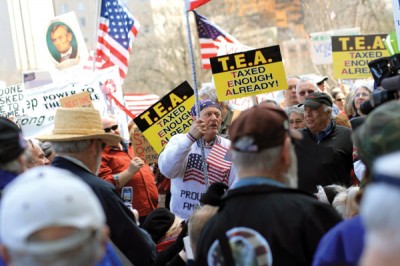
That pairing lasted until the 1840s when the issue of slavery poisoned everything. Think there’s a lack of civility in politics today? Emotions about this issue grew so violent that when Senator Charles Sumner of Massachusetts angrily denounced slave owners in 1856, Representative Preston Brooks of South Carolina beat him almost to death right on the Senate floor. The Whig party split apart and crumbled in the 1850s. After a flurry of short-lived parties with names like Free-Soil and Know-Nothing flared up and died, a new anti-slavery party emerged: the Republicans. It elected its first president, Abraham Lincoln, in 1860, and it survives as the Republican party of today.
And so the two parties we still know—Andrew Jackson’s Democrats and Abraham Lincoln’s Republicans—were already in place 150 years ago. They have evolved and changed continually, though. Throughout the rest of the nineteenth century, the Republicans were the party of business and of relatively strong centralized government power, partly because the opponents of slavery had tended to be prosperous citizens of the industrialized, urban North. Meanwhile the South became overwhelmingly Democratic, in opposition to the party that had risen from the antislavery movement. The Democrats were the party not only of the white-dominated South but also of states’ rights and small government and rural interests.
From time to time events shifted the two parties and their relative power. At the turn of the twentieth century a “progressive” movement grew up that sought to clamp down on big business. A Republican progressive, Theodore Roosevelt, served as president from 1901 to 1909, and the Democrats elected their own progressive, Woodrow Wilson, in 1912. But in the boom years of the 1920s, old-fashioned business-friendly Republicans took charge again—until the crash of 1929 and the Depression.
By 1932 Republicans had held the White House for 11 straight years, but the Republican-led boom had turned into a Republican-led bust, and in the depths of the Depression the nation elected a Democrat, Franklin D. Roosevelt, who would serve until his death in 1945. There would be a Republican in the White House for only eight years between 1933 and 1969. Roosevelt won all but two states in 1936, and the Republican Party appeared to be all but dead.
As the nation fought a world war and climbed out of the economic depths, however, the Republican party slowly healed its wounds. It almost won the White House in 1948 when the Chicago Tribune ran its infamous mistaken “Dewey Defeats Truman” headline. It did take the presidency in 1952, electing the greatest military hero of World War II, Dwight D. Eisenhower. It barely lost to John F. Kennedy in 1960.
The 1960s were a time of tumult for the two parties just as they were for America as a whole. The Vietnam War drove a Democratic president, Lyndon B. Johnson, to announce that he wouldn’t run for reelection in 1968, and the agonies of the Civil Rights movement, which he had championed, led many white Southern politicians to abandon the Democratic party just as they had swept into it a century before. From 1969 to 1993 there would be a Democratic president for only four years, during the single, luckless term of the last of the powerful Southern Democrats, Jimmy Carter.
Today the same two parties still dominate the political world in the U.S. The Republicans are broadly seen as the party of business and of less rather than more government action and regulation. The Democrats remain the standard-bearers for organized labor and the entitlements that grew up with Franklin D. Roosevelt’s New Deal. The Democrats are generally considered the stronger party among blacks and other minorities as it has been since the Civil Rights movement of the 1960s (and it had been gaining ground among those minorities earlier), but since race is a much smaller part of our national politics than it once was, that is less of a defining difference now than in the past.
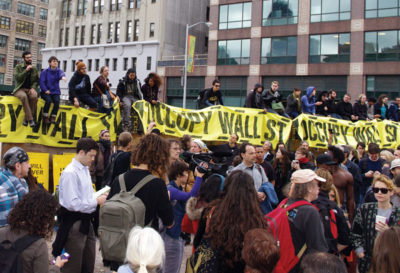
Why are the parties getting along so terribly right now? It hasn’t always been this bad. They have sometimes seemed especially polarized and antagonistic but sometimes quite similar and cooperative. They grew somewhat alike during the progressive era; they were bitterly opposed during the presidency of Franklin D. Roosevelt and the New Deal. They had much in common during much of the late twentieth century when Republican Richard Nixon carried on some of the Civil Rights initiatives of Democrat Lyndon Johnson and when Democrat Bill Clinton realized some of the welfare-limiting and budget-balancing dreams of Republican Ronald Reagan. Basically, they have tended to move closer together when economic times are good and there is less to drive them apart. Since the Great Recession began in 2008 and economic times turned bad, they have been as sharply divided as ever.
What lies at the base of all their differences, beneath all the individual policy matters they face off about such as abortion and immigration policy and tax breaks for the wealthy and so much else? And what has made them endure for so long? Why do we have two parties instead of three or four or more? There is probably just one answer to all these questions: The parties, at bottom, represent fundamentally opposed basic concepts of government. They stand for government as either essentially good or essentially bad. Americans who believe that government can and must be a powerful force for good tend to be Democrats. Americans who believe that government gets in the way more often than it helps, that it should be as limited and small as possible, tend to be Republicans. Before Franklin D. Roosevelt, Democrats were more the small government party and Republicans the big government one; Roosevelt’s New Deal and the rise of the broad government programs we have had ever since turned that around. The shift of the South from Democratic to Republican in the 1960s and 1970s cemented that change.
However, as dangerously and irreconcilably divided as the parties seem right now, they’re almost certainly not about to crumble. In fact, the sharpest rift right now may be within one of the parties, the Republicans. Since the rise of Tea Party power in the 2010 elections, the Republicans in the House of Representatives have been embattled among themselves, with speaker John Boehner struggling endlessly—often hopelessly— to get them to agree on anything. Similarly, the lead-up to the 2012 Republican primaries has been marked by a stubbornly unyielding polarity between staunchly conservative and Tea Party-favoring candidates like Michele Bachmann and more moderate ones like Mitt Romney. It may be that the Republican party will soon redefine itself, as both parties have so often done in the past, but there’s nothing happening to suggest that we’ll soon have three or four major parties.
Why? Because so much of what people disagree on comes down to that basic tension between big, strong government and small, limited government. And that tension can probably never be finally resolved, at least in a nation that is based on free enterprise and individual liberty and initiative—and that is also based on equal opportunity and equal rights and fairness for all. The division between left and right will probably be with us always. In fact, it has become so central to our national psyche that I’d suggest another way of looking at the great divide, by seeing us all as a great American family with a timeless family dynamic.
If indeed we are in any sense a national family, then maybe, just possibly, in an abstract sense, within that family Republicans are our father and Democrats are our mother. I mean this: Your stereotypical father protects the home fiercely but also expects his children to be strong and resilient and self-reliant and to learn by tough love and end up looking out for themselves, just as Republicans are stereotypically strong on defense and weak on coddling. Your stereotypical mother builds the nest and is nurturing and gives everyone their meal and wants all the children to embrace love and fairness, just as Democrats focus more on supporting workers and striving to lift up the poor and the struggling. It’s no coincidence that it’s mostly Republicans who attack “the nanny state” and Democrats who warn, “Big Brother is watching you.” These are of course clichés, both about mothers and fathers and about Democrats and Republicans. But doesn’t every cliché contain a grain of truth?
And if there is a grain of truth here, then I’d add that just as the traditional ideal of a strong family has two parents, a mother and a father, then perhaps also our nation does best with two parties, Democratic and Republican. They may fight noisily from time to time, but who would have it any other way? Who wouldn’t want to have both kinds of love and care and moral passion? We need them to balance each other and show us the whole range of love and support. The system, like any marriage, and even the institution of marriage itself, may be far from perfect, but what else could possibly be better?
Become a Saturday Evening Post member and enjoy unlimited access. Subscribe now


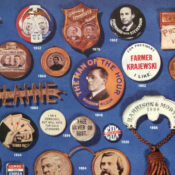
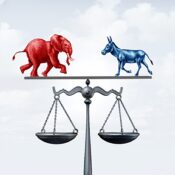
Comments
Here is an idea for a new third party: http://thenewthirdparty.blogspot.com/
I believe that we do already have three parties. Only the American citizens have forgotten who the third party is. It is “We the people”. Also, the members of the other two parties have forgotten that they are “servants” of the people and not royalty. Our elected ones need to be reminded of this now and the sooner the better. The best way to do this is to “knock” a few of them out of their seats before their term is up.
We should start with the POTUSA.
Honestly, Does your representative in WA do your bidding, speak what you think, truly represent you?